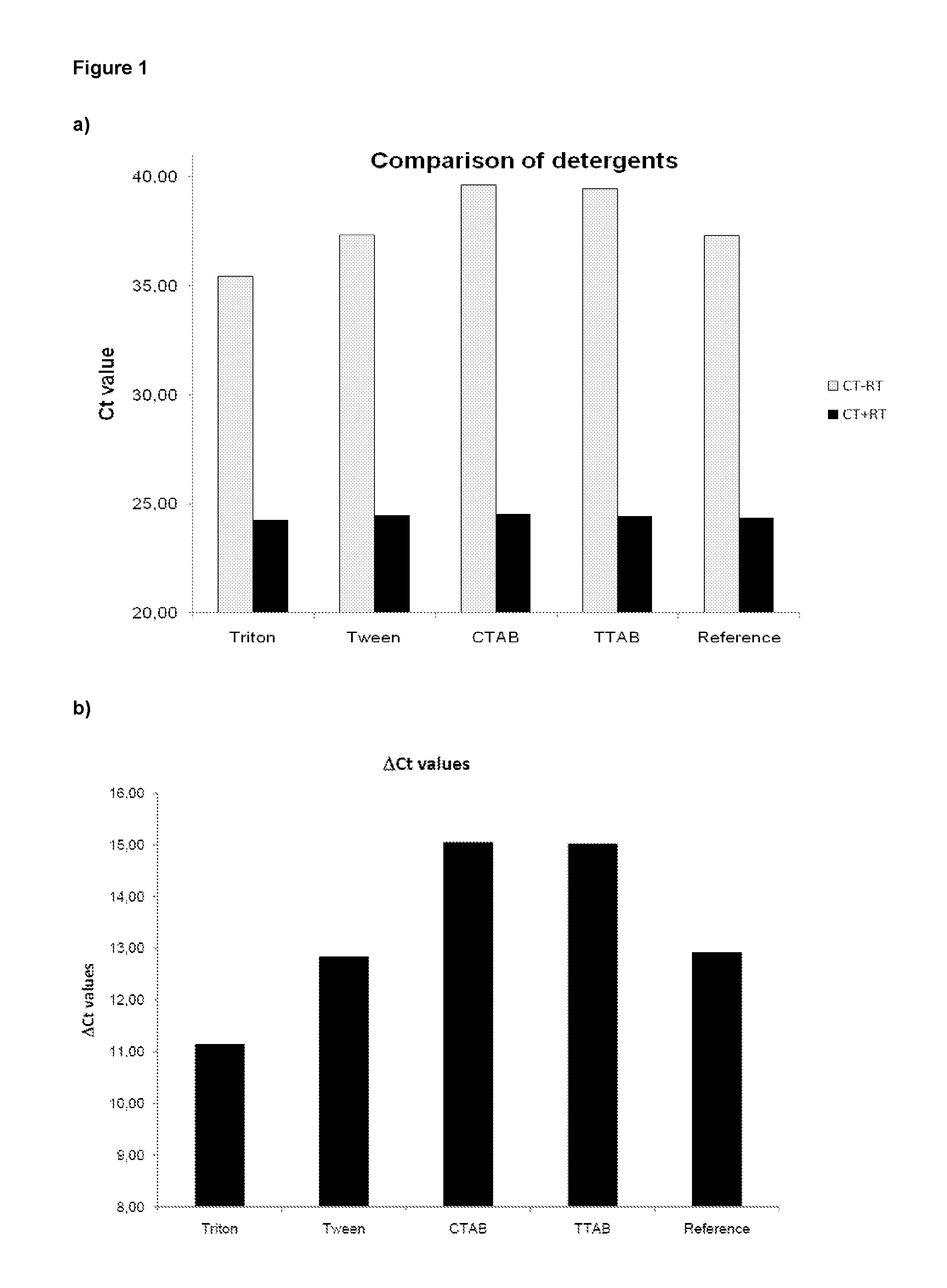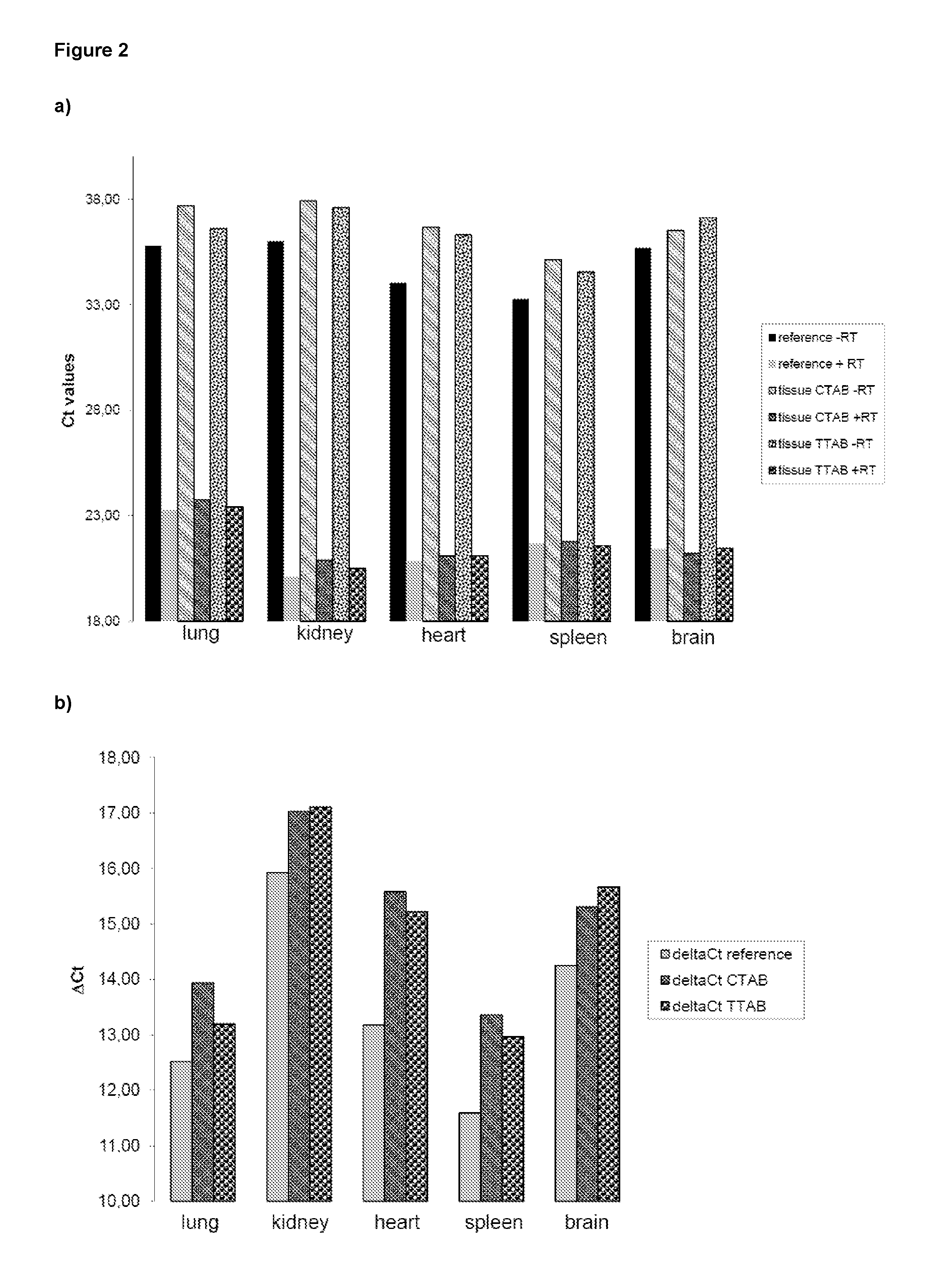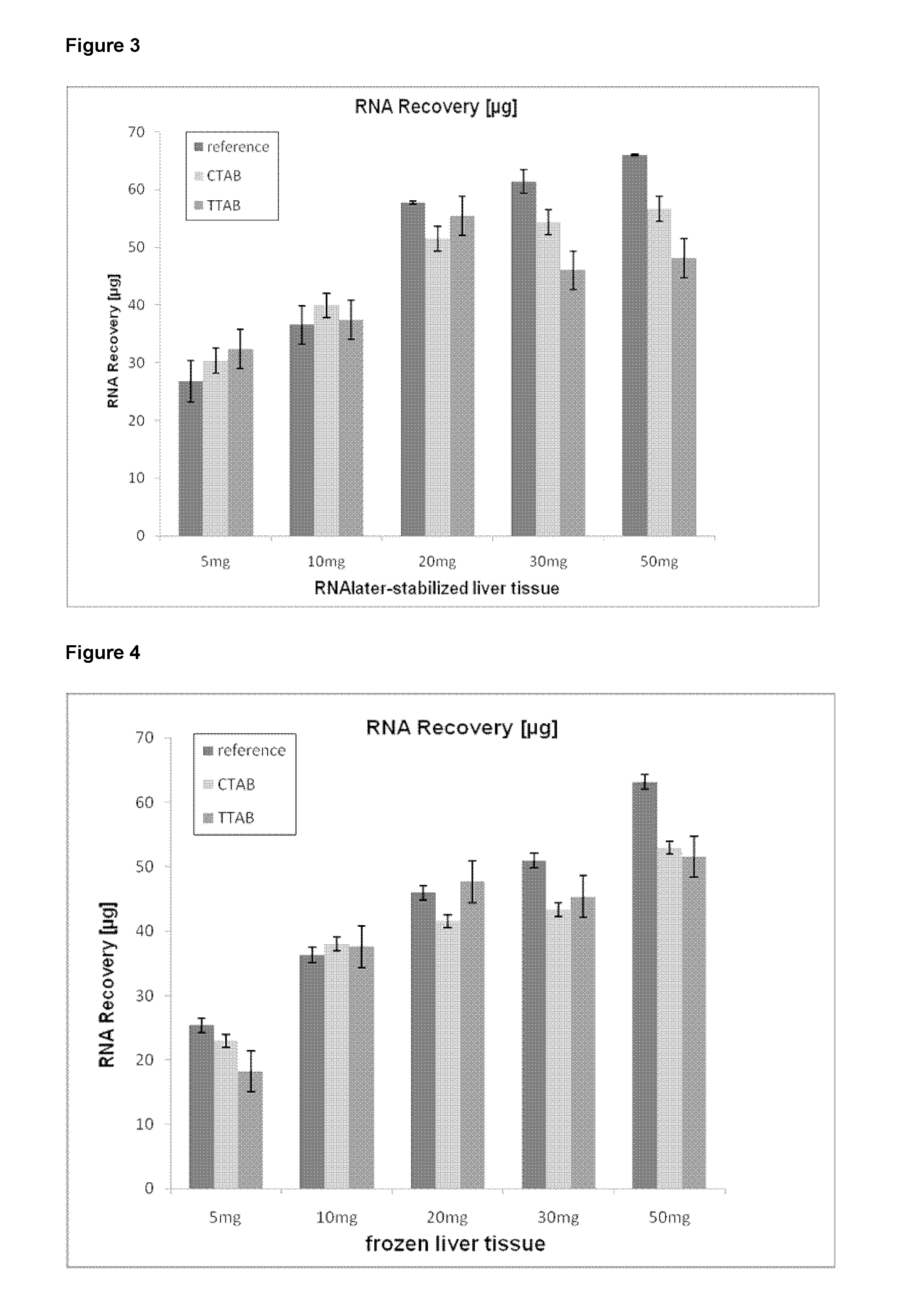Method of isolating purified RNA with reduced DNA contaminations
a technology of purified rna and isolating method, which is applied in the direction of sugar derivates, organic chemistry, dissolving, etc., can solve the problems of reducing the dna contamination rate, affecting the downstream application of purified rna, and exposing the rna to the risk of degradation, so as to reduce the amount of dna contamination
- Summary
- Abstract
- Description
- Claims
- Application Information
AI Technical Summary
Benefits of technology
Problems solved by technology
Method used
Image
Examples
example 1
[0096]Effect of different detergents on the elimination of genomic DNA during isolation of RNA from rat liver was assessed by the following method:[0097]1. 270 mg of RNAlater-stabilized liver tissue were homogenized in 27 ml of Qiazol reagent, an acidic phenol and chaotropic salt-containing reagent, using a TissueRuptor homogenizer.[0098]2. 1000 μl of the resulting homogenate was aliquoted into 2 ml Eppendorf tubes. Thus, 10 mg of tissue was used per sample.[0099]3. 8 μl (5 μg) of genomic DNA was added to the Qiazol reagent prior to phase separation.[0100]4. In a next step, 100 μl of the following detergents were added to the homogenates (in duplicate):[0101]Triton X-100 [100%][0102]Tween20 [20%][0103]Cetyl-trimethyl-ammonium bromide [1%], CTAB[0104]Tetra-decyl-trimethyl-ammonium bromide [1%], TTAB.[0105] For the reference, no detergent was added (“reference”).[0106] This was followed by the addition of 200 μl chloroform and vortexing.[0107]5. The samples were centrifuged for 15 min...
example 2
[0126]The following experiment was done to assess the amount of genomic DNA co-purified during RNA isolation from different tissues using the Qiazol reagent while adding the detergent directly to the homogenate:[0127]1. 200 mg of RNAlater-stabilized lung, kidney, heart, spleen and brain tissue were homogenized in 8 ml Qiazol reagent, using a TissueRuptor homogenizer.[0128]2. Homogenates, 1000 μl each (corresponding to 25 mg tissue per sample), were aliquoted into 2 ml Eppendorf tubes and 100 μl of the following detergent stock solutions were added thereto:[0129]Cetyl-trimethylammonium bromide [1%], CTAB[0130]Tetra-decyltrimethylammonium bromide [1%], TTAB.[0131] For the reference, no detergent was added (“reference”).[0132] This was followed by the addition of 200 μl chloroform and vortexing.[0133]3. The samples were centrifuged for 15 min at 12.000×g at 4° C. and the resulting aqueous phase was transferred into new Eppendorf tubes.[0134]4. The supernatant was mixed with 1.5 volumes...
example 3
[0150]RNA was isolated from increasing amounts of tissue using the Qiazol reagent wherein the cationic detergent was directly added to the homogenate according to the following procedure:[0151]1. 5 mg, 10 mg, 20 mg, 30 mg and 50 mg of (a) RNAlater-stabilized liver or (b) frozen liver were homogenized in 1 ml Qiazol reagent using a TissueRuptor homogenizer.[0152]2. 100 μl of the following detergent stock solutions were added:[0153]Cetyl-trimethylammonium bromide [1%], CTAB[0154]Tetra-decyltrimethylammonium bromide [1%], TTAB.[0155] For the reference, no detergent was added (“reference”).[0156] This was followed by the addition of 200 μl chloroform and vortexing.[0157]3. The samples were centrifuged for 15 min at 12.000×g at 4° C., the resulting aqueous phase was transferred into new Eppendorf tubes.[0158]4. The supernatant was mixed with 1.5 volumes of absolute ethanol and the aqueous phase was transferred onto RNeasy mini columns (Qiagen) and centrifuged for 15 s at 8.200×g, followe...
PUM
| Property | Measurement | Unit |
|---|---|---|
| temperature | aaaaa | aaaaa |
| temperature | aaaaa | aaaaa |
| temperature | aaaaa | aaaaa |
Abstract
Description
Claims
Application Information
 Login to View More
Login to View More - R&D
- Intellectual Property
- Life Sciences
- Materials
- Tech Scout
- Unparalleled Data Quality
- Higher Quality Content
- 60% Fewer Hallucinations
Browse by: Latest US Patents, China's latest patents, Technical Efficacy Thesaurus, Application Domain, Technology Topic, Popular Technical Reports.
© 2025 PatSnap. All rights reserved.Legal|Privacy policy|Modern Slavery Act Transparency Statement|Sitemap|About US| Contact US: help@patsnap.com



